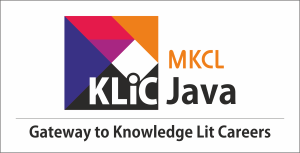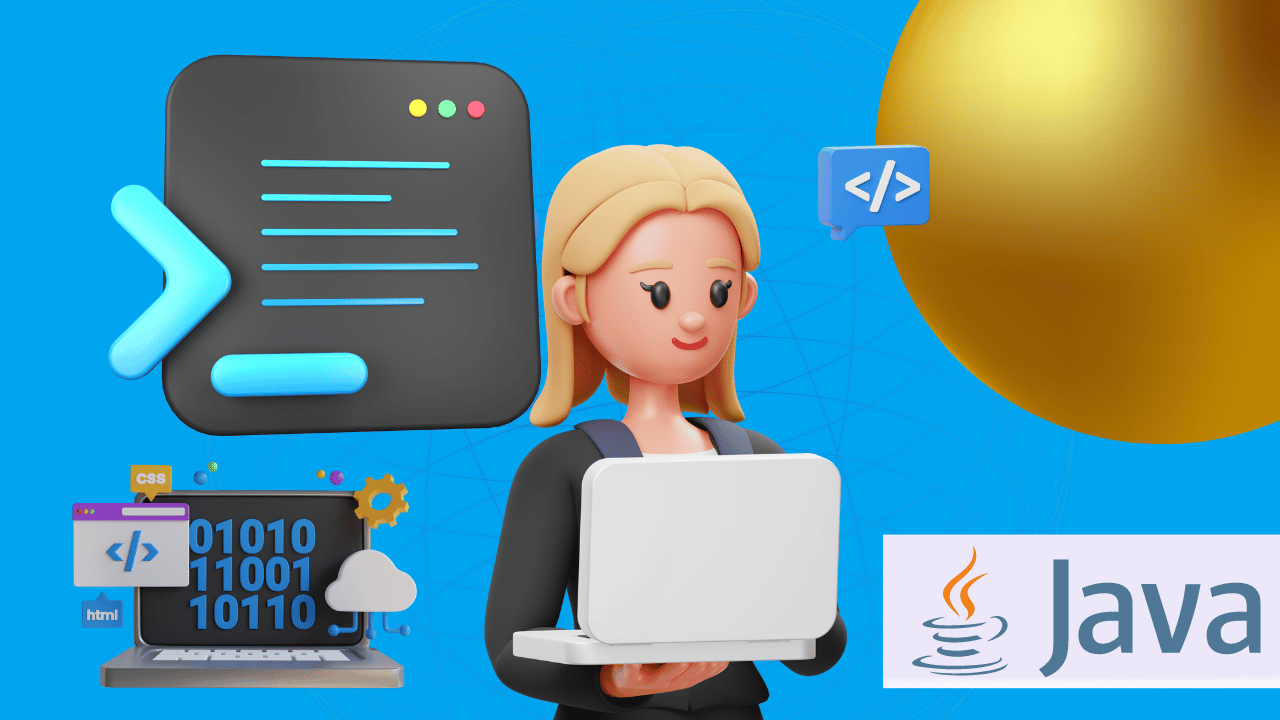- Compare the fundamental features of HTML and JSP, highlighting their respective roles in web development.
- Examine the process of session management in JSP, analysing how data is stored and retrieved using session objects.
- Categorize the diverse types of HTML forms, demonstrating how data is read and processed from various form elements.
- Differentiate between servlets and JSP, elucidating their individual strengths and use cases in web development.
- Distinguish the key characteristics of JDBC (Java Database Connectivity) and its significance in servlets for database interaction.
- Estimate the execution time and resource usage of different Java programs, considering factors like loop complexity and method calls.
- Predict the output of Java programs involving conditional statements, loops, and method calls, enhancing the ability to foresee program behaviour.
- Rate the efficiency and appropriateness of different loop structures in Java, providing insights into their optimal use cases.
- Arrange the steps involved in installing and configuring a Tomcat server, demonstrating the systematic setup required for web development.
- Assemble a comprehensive JSTL (JavaServer Pages Standard Tag Library) example, integrating various JSTL tags to achieve specific functionality.

Introduction to Java Programming Fundamentals
Learn Java syntax, data types, and core programming concepts through hands-on exercises.
Introduction
What you'll learn ?
- By the end of the course, learners will be able to:
- Experiment with various Java features, gaining practical insights into their applications.
- Make use of Java advantages, understanding when and how to apply its features in programming scenarios.
- Utilize Integrated Development Environments (IDEs) such as Netbeans, Eclipse, and IntelliJ effectively.
- Combine variables and literals creatively, highlighting a nuanced understanding in Java code.
- Solve programming challenges using a variety of operators, demonstrating problem-solving skills.
- Predict and control program flow through effective use of control structures like if statements and switch case.
- Survey and master various looping techniques, including while, do..while, and for loops.
- Compare and evaluate different programming constructs, distinguishing use cases for if statements, switch case, and various loop types.
- Examine the functionality of Integer and Float class methods, applying them effectively in Java programming scenarios.
- Differentiate array manipulation techniques and explore search/sort methods, including linear search, binary search, bubble sort, and selection sort.
Syllabus
- Why should you learn Java?
- Prerequisites for this course
- What are you going to learn?
- Introduction to programming languages
- Installing Java Development Kit (JDK)
- JDK, JRE and JVM
- Importance of Java in the context of Internet
- Features of Java
- Object Oriented Programming Paradigm (OOP)
- Relationship between classes and objects
- Features of OOPs - Encapsulation and Inheritance
- Features of OOPs - Abstraction and Polymorphism
- Data types in Java - Integers, floating-point, characters, Boolean
- Concept of variables, their declarations
- Literals - Integer, floating-point, character, Boolean, strings
- How to Write java code, compile and execute?
- Explanation of System class and printing method
- First Java Program using Notepad
- Explanation of important terms like main(), public, void, static
- Comments in Java
- Understanding command line arguments
- Sample program of command line arguments
- Using parseInt() with command line arguments
- Using parseFloat() with command line arguments
- Introduction to IDEs
- Components of Netbeans
- Creating a project in Netbeans
- Exporting & importing projects
- Intro to Eclipse IDE
- Intro to IntelliJ IDE
- Online IDEs
- First Java Program using NetBeans
- Second Java program in NetBeans
- Understanding concatenation
- Coding examples of concatenation
- Using Command Line arguments in Java program written in NetBeans
- Reading values from keyboard using Scanner class object - Part 1
- Reading values from keyboard using Scanner class object - Part 2
- Tricks to prevent the skipping of String input value
- Implicit type casting
- Explicit type casting
- Some sample programs - Part 1
- Some sample programs - Part 2
- Some sample programs - Part 3
- Formatting output using printf()
- More about formatting output
- Formatting dates
- Operators in Java - Part 1
- Operators in Java - Part 2
- Operators in Java - Part 3
- Precedence and associativity of operators
- Examples of precedence and associativity
- Some sample programs illustrating usage of arithmetic operators
- Some sample programs illustrating usage of relational operators
- Some sample programs illustrating usage of logical operators
- Some sample programs illustrating usage of unary operators
- Some sample programs illustrating usage of ternary operator
- Compound assignment operators with sample programs
- Programming Construct Sequence
- Sample programs of sequence
- if statement
- Sample programs of if
- if else if ladder
- Nested if
- Sample programs of nested if
- Overview of switch case construct
- Sample programs of switch case
- Difference between if and switch case
- Practice program - Switch Case - To find out salary of employee
- Basics of loops and while loop
- sample programs of while loop
- while loop pre-tested property
- Basics of do..while loop
- while loop post-tested property
- Basics of for loop
- Sample programs of for loop
- for loop pre-tested property
- More features of for loop
- Infinite loops
- Using break statement
- Using continue statement
- Practice program - Factorial
- Practice program - Reverse a number
- Practice program - Palindrome number
- Practice program - Armstrong number
- Practice program - Prime number - Part 1
- Practice program - Prime number - Part 2
- Practice program - Biggest among n numbers
- Practice program - finding the square roots of a range of numbers
- Practice program - finding the power of numbers
- Practice program - generating Fibonacci series
- Practice program - printing ASCII set
- Practice program - Number guessing game
- Introduction to nested loops
- Second sample program of nested loops
- Third sample program of nested loops
- Fourth sample program of nested loops
- Fifth sample program of nested loops
- Practice program - Printing multiple tables
- Practice program - Asking the user whether to continue printing factorials
- Practice program - Asking the user whether to continue printing tables
- Explanation of Integer methods - compareto, toString, valueOf
- Programs of compareTo, toString, valueOf
- Explanation of Integer methods - doubleValue, floatValue, equals
- Programs of doubleValue, floatValue, equals
- Explanation of Integer methods - Signum, Min, Max, parseInt
- Programs of Signum, Min, Max, parseInt
- Explanation of Integer methods - intValue, sum
- Programs of intValue, sum
- Explanation of float methods - compareTo, toString
- Programs of compareTo, toString
- Explanation of valueOf, doubleValue, equals, parseFloat
- Programs of valueOf, doubleValue, equals, parseFloat
- The basic concept of arrays
- Declaring an array dynamically using two methods
- Traversing array elements
- Array name-reference to the array
- Using for each format of the for loop
- Merging two arrays
- Getting the absolute values of array elements
- Array of strings
- Linear Search Logic and algorithm
- Linear search program
- Logic of Binary search
- Algorithm of binary search
- Program of binary search
- Flow of Logic of Bubble sort
- Algorithm of bubble sort
- Bubble sort program
- Flow of logic of selection sort
- Algorithm of selection sort
- Selection sort program
- Using sort method of Array class
- Basics of double dimensional arrays
- First sample program of 2-D arrays
- Second sample program of 2-D arrays
- Third sample program of 2-D arrays
- 2-D arrays with different number of columns
- Matrix addition - logic and algo
- Program of matrix addition
- Logic of matrix multiplication
- Algorithm of matrix multiplication
- Program of matrix multiplication
- Basics of functions
- Components of a function
- Understanding actual & formal parameters - explanation
- Understanding actual & formal parameters - sample program
- Second sample program
- To return or not to return a value - sample programs
- Scope of variables in functions - Part 1
- Scope of variables in functions - Part 2
- Some facts about return statement
Certificate
- MKCL provides certificate (for 30/60/90 hours courses) to the KLiC learner after his/her successful course completion.
Academic Approach
The Academic Approach of the course focuses on the “work centric” education i.e. begin with work (and not from a book !), derive knowledge from work and apply that knowledge to make the work more wholesome, useful and delightful. The ultimate objective is to empower the Learner to engage in socially useful and productive work. It aims at leading the learner to his/her rewarding career as well as development of the society.
Learning methodology
- Learners are given an overview of the course and its connection to life and work.
- Learners are then exposed to the specific tool(s) used in the course through the various real-life applications of the tool(s).
- Learners are then acquainted with the careers and the hierarchy of roles they can perform at workplaces after attaining increasing levels of mastery over the tool(s).
- Learners are then acquainted with the architecture of the tool or Tool Map so as to appreciate various parts of the tool, their functions and their inter-relations.
- Learners are then exposed to simple application development methodology by using the tool at the beginner’s level
- Learners then perform the differential skills related to the use of the tool to improve the given ready-made outputs.
- Learners are then engaged in appreciation of real-life case studies developed by the experts.
- Learners are then encouraged to proceed from appreciation to imitation of the experts.
- After imitation experience, they are required to improve the expert’s outputs so that they proceed from mere imitation to emulation.
- Finally, they develop the integral skills involving optimal methods and best practices to produce useful outputs right from scratch, publish them in their ePortfolio and thereby proceed from emulation to self-expression.
Evaluation Pattern
Evaluation Pattern of KLiC Courses consists of 4 Sections as per below table:
| Section No. | Section Name | Total Marks | Minimum Passing Marks |
|---|---|---|---|
| 1 | Learning Progression | 25 | 10 |
| 2 | Internal Assessment | 25 | 10 |
| 3 | Final Online Examination | 50 | 20 |
| Total | 100 | 40 | |
| 4 | SUPWs (Socially Useful and Productive Work in form of Assignments) | 5 Assignments | 2 Assignments to be Completed & Uploaded |
MKCL’s KLiC Certificate will be provided to the learner who will satisfy the below criteria:
- Learners who have successfully completed above mentioned 3 Sections i.e. Section 1, Section 2 and Section 3
- Additionally, learner should have completed Section 4 (i.e. Section 4 will comprise of SUPWs i.e. Socially Useful and Productive Work in form of Assignments)
- Learner has to complete and upload minimum 2 out of 5 Assignments
Courses Fee Structure from 01 July, 2025 Onwards
KLiC 30 hour course fee applicable from 01 July, 2025 all over Maharashtra| KLiC Course Duration | MFO: MKCL Share (Including 18% GST) |
ALC Share (Service Charges to be collected by ALC) |
|---|---|---|
| 30 hours | Rs. 300/- | Rs. 1,500/- |
Important Points:
* Above mentioned fee is applicable for all Modes of KLiC Courses offered at Authorised Learning Center (ALC) and at Satellite Center
* Total fee is including of Course fees, Examination fees and Certification fees
* MKCL reserves the right to modify the Fee anytime without any prior notice
* Above mentioned fee is applicable for all Modes of KLiC Courses offered at Authorised Learning Center (ALC) and at Satellite Center
* Total fee is including of Course fees, Examination fees and Certification fees
* MKCL reserves the right to modify the Fee anytime without any prior notice
